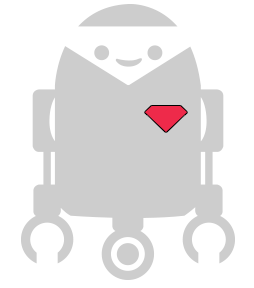"use strict"; var Cylon = require("cylon"); Cylon.robot({ connections: { opencv: { adaptor: "opencv" } }, devices: { window: { driver: "window" }, camera: { driver: "camera", camera: 0, haarcascade: __dirname + "/haarcascade_frontalface_alt.xml" } }, work: function(my) { // We setup our face detection when the camera is ready to // display images, we use `once` instead of `on` to make sure // other event listeners are only registered once. my.camera.once("cameraReady", function() { console.log("The camera is ready!"); // We add a listener for the facesDetected event // here, we will get (err, image/frame, faces) params back in // the listener function that we pass. // The faces param is an array conaining any face detected // in the frame (im). my.camera.on("facesDetected", function(err, im, faces) { if (err) { console.log(err); } // We loop through the faces and manipulate the image // to display a square in the coordinates for the detected // faces. for (var i = 0; i < faces.length; i++) { var face = faces[i]; im.rectangle( [face.x, face.y], [face.x + face.width, face.y + face.height], [0, 255, 0], 2 ); } // The second to last param is the color of the rectangle // as an rgb array e.g. [r,g,b]. // Once the image has been updated with rectangles around // the faces detected, we display it in our window. my.window.show(im, 40); // After displaying the updated image we trigger another // frame read to ensure the fastest processing possible. // We could also use an interval to try and get a set // amount of processed frames per second, see below. my.camera.readFrame(); }); // We listen for frameReady event, when triggered // we start the face detection passing the frame // that we just got from the camera feed. my.camera.on("frameReady", function(err, im) { if (err) { console.log(err); } my.camera.detectFaces(im); }); my.camera.readFrame(); }); } }).start();




